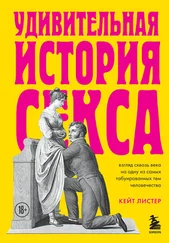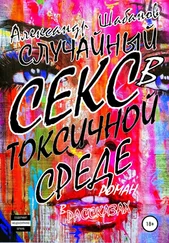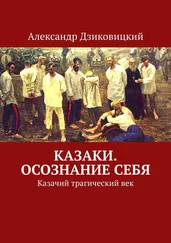Fernandez-Armesto E, Before Columbus. Exploration and Colonisation from the Mediterranean to the Atlantic, 1229–1492 (London, 1987).
FilesiT., «Enrico, figlio del re del Congo, primo vescovo dell’Africa nero (1518)», Euntes Docete 19 (1966): 365-85.
Finlay R., «The Foundation of the Ghetto: Venice, the Jews, and the War of the League of Cambrai», Proceedings of the American Philosophical Society 126/2 (1982): 140-54.
Fiume G., and M. Modica, eds., San Benedetto II того: santita, agiografia e primi processi di canonizzazione (Palermo, 1998).
Fletcher S., and C. Shaw, eds., The World of Savonarola: Italian elites and perceptions of crisis (Aldershot, 2000).
Fragnito G., «Cardinals’ Courts In Sixteenth-Century Rome», Journal of Modern History 65/1 (1993): 26–56.
Franceschi E, «The Economy: Work and Wealth» In Najemy, ed., Italy In the Age of the Renaissance, 124-44.
Francese }., «On Homoerotic Tension In Michelangelos Poetry», MINI 17/1 (2002): 17–47.
Fraser Jenkins A. D., «Cosimo de Medici’s Patronage of Architecture and the Theory of Magnificence», Journal of the Warburg and Courtauld Institutes 33 (1970): 162-70.
Freely J., Jem Sultan: The Adventures of a Captive Turkish Prince In Renaissance Europe (London, 2004).
Frommel C. L., Michelangelo und Tommaso dei Cavalieri (Amsterdam, 1979).
Fuson R. H., Legendary Islands of the Ocean Sea (Sarasota, 1995).
Garfagnini G. C, ed., Savonarola e lapolitica (Florence, 1997).
Garin E., Giovanni Pico della Mirandola: Vita e dottrina (Florence, 1937).
Gilbert С. E., «Fra Angelico’s Fresco Cycles In Rome: Their Number and Dates», Zeitschriftfiir Kunstgeschichte 38/3-4 (1975): 245–265.
Gilbert С. E., Poets Seeing Artists’ Work: Instances In the Italian Renaissance (Florence, 1991).
Giles K. A., «The Strozzi Chapel In Santa Maria Novella: Florentine Painting and Patronage, 1340–1355», Unpublished PhD Dissertation, New York University, 1977.
Gill J., The Council of Florence (Cambridge, 1959).
Gilson S., Dante and Renaissance Florence (Cambridge, 2005).
Goldthwaite R. A., «The Florentine Palace as Domestic Architecture», American Historical Review 77/4 (1972): 977-1012.
Goldthwaite R. A., Private Wealth In Renaissance Florence: A Study of Four Families (Princeton, 1968).
Goldthwaite R. A., The Economy of Renaissance Florence (Baltimore, 2009).
Gombrich E. H., «From the revival of letters to the reform of the arts», In D. Fraser, H. Hibbard, and M. J. Lewine, eds., Essays In the History of Art Presented to Rudolf Wittkower (London, 1967), 71–82.
Gombrich E. H., «leones Symbolicae: The Visual Image In Neo-Platonic Thought», Journal of the Warburg and Courtauld Institutes 11 (1948): 163–192.
Gombrich E. H., «The Early Medici as Patrons of Art», In E. F. Jacobs, ed., Italian Renaissance Studies (London, 1960), 279–311.
Gombrich E. H., The Story of Art, 15th ed. (London, 1989).
Gow A., and G. Griffiths, «Pope Eugenius IV and Jewish Money-Lending In Florence: The Case of Salomone di Bonaventura during the Chancellorship of Leonardo Bruni», Renaissance Quarterly 47/2 (1994): 282–329.
Grafton A., ed., Rome Reborn. The Vatican Library and Renaissance Culture (Washington and New Haven, 1993).
Grafton A., and L. Jardine, From Humanism to the Humanities: Education and the Liberal Arts In Fifteenth- and Sixteenth-Century Europe (Cambridge MA, 1986).
Granato L. R., «Location of the Armoury In the Italian Renaissance Palace», Waffen und Kostumkunde 24 (1982): 152–153.
Grayzel S., The Church and the Jews In theXIIIth Century (Philadelphia, 1933).
Green L., «Galvano Fiamma, Azzone Visconti and the Revival of the Classical Theory of Magnificence», Journal of the Warburg and Courtauld Institutes 53 (1990): 98-113.
Greenblatt S., Renaissance Self-Fashioning. From More to Shakespeare (Chicago, 1984).
Gregory H., «Palla Strozzis Patronage and Pre-Medicean Florence», In F. W. Kent and P. Simmons, ed., Patronage, Art and Society In Renaissance Italy (Oxford, 1987), 201-20.
GrendlerP., Schooling In Renaissance Italy: Literacy and Learning, 1300–1600 (Baltimore, 1989).
Grey C., and P. Heseltine, Carlo Gesualdo, Musician and Murderer (London, 1926).
Gualdo G., «Leonardo Bruni segretario papale (1405–1415)», In P. Viti, ed., Leonardo Bruni, Cancelliere della Repubblica di Firenze (Florence, 1990), 73–93.
Guidotti A., «Pubblico e private, committenza e clientele: Botteghe e produzione artistica a Firenze tra XV e XVI secolo», Richerche storiche 16 (1986): 535-50.
Gutkind C., Cosimo de Medici: Pater Patriae, 1389–1464 (Oxford, 1938).
Hale J. R., Florence and the Medici. The Pattern of Control (London, 1977).
Hankins J., «Renaissance Crusaders: Humanist Crusade Literature In the Age of Mehmed II», Dumbarton Oaks Papers 49 (1995): 111-207
Hankins J., «The Myth of the Platonic Academy of Florence», Renaissance Quarterly 44/3 (1991): 429-47.
Harris J., Greek fmigres In the West, 1400–1520 (Camberley, 1995).
Harrison C., «The Arena Chapel: patronage and authorship», In Norman, ed., Siena, Florence and Padua, 2: 83-104.
Hatfield R., Botticellis Uffizi Adoration. A Study In Pictorial Content (Princeton, 1976)
Hatfield R., «Cosimo de Medici and the Chapel of His Palace», In Ames-Lewis, ed., Cosimo “il Vecchio” de Medici, 221-44.
Hatfield R., «The Compagnia de Magi», Journal of the Warburg and Courtauld Institutes 33 (1970): 107-61.
Hatfield R., The Wealth of Michelangelo (Rome, 2002).
Hay D., The Church In Italy In the Fifteenth Century (Cambridge, 1977).
Hazelton Haight E., «Horace on Art: Ut Pictura Poesis», The Classical Journal 47/5 (1952): 157-62, 201–202.
Helmrath J., «Pius II und die Tiirken», In B. Guthmiiller and W. Kuhlmann, eds., Europa und die Tiirken In der Renaissance (Tubingen, 2000), 79-138.
Herlihy D., and C. Klapisch-Zuber, Les Toscans et leurs families (Paris, 1978).
Herlihy D., and C. Klapisch-Zuber, Tuscans and Their Families: A Study of the Florentine Catasto of 1427 (New Haven, 1985).
Heydenreich L. H., «Federico da Montefeltro as a building patron», In Studies In Renaissance and Baroque Art presented to Anthony Blunt on his 60th Birthday (London, 1967), 1–6.
Hibbert C., The Rise and Fall of the House of Medici (London, 1979).
Hirst M., «Michelangelo In 1505», Burlington Magazine 133/1064 (1991): 760-66.
Hirst M., Michelangelo , vol. 1, The Achievement of Fame (New Haven and London, 2011).
Hofmann H., «Aeneas In Amerika: De «Columbeis» van Julius Caesar Stella», Hermeneus 64 (1992): 315–322.
Hofmann H., «La scoperta del nuovo mondo nella poesia neolatina: I «Columbeidos libri priores duo» di Giulio Cesare Stella», Columbeis III (Genoa, 1988), 71–94.
Holmes G., «Cosimo and the Popes», In Ames-Lewis, ed., Cosimo “il Vecchio” de Medici , 21–31.
Holmes G., «How the Medici became the Popes Bankers», In N. Rubinstein, ed., Florentine Studies (Evanston, 1968), 357-80.
Howard D., Venice and the East: The Impact of the Islamic World on Venetian Architecture, 1100–1500 (New Haven, 2000).
Howard P., «Preaching Magnificence In Renaissance Florence», Renaissance Quarterly 6112 (2008): 325–369.
Читать дальше
Конец ознакомительного отрывка
Купить книгу
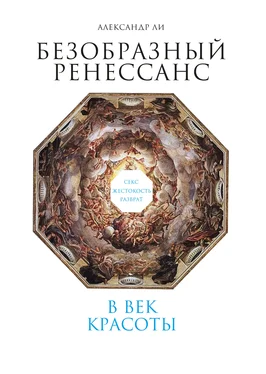


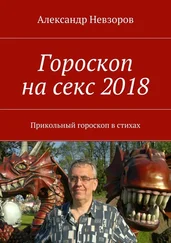
![Александр Бадак - Всемирная история в 24 томах. Т.1. Каменный век [гнусная калибрятина]](/books/401178/aleksandr-badak-vsemirnaya-istoriya-v-24-tomah-t-1-thumb.webp)




